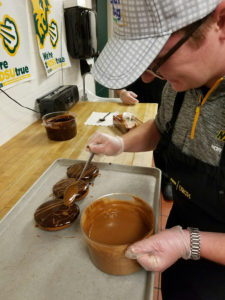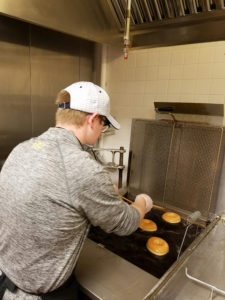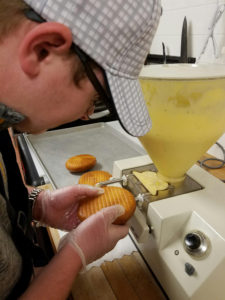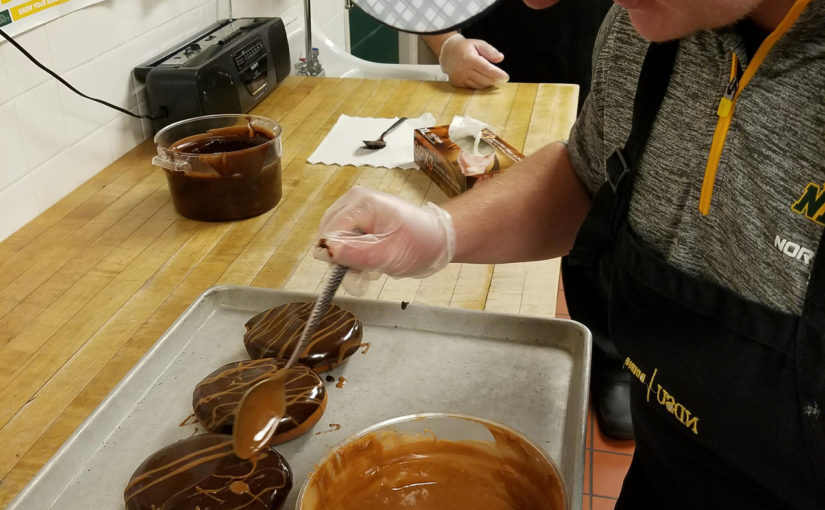Did you know that North Dakota State has its very own bakery? Maybe if you’re like me, it was never one of those things that crossed your mind. But the doughnuts, dinner rolls, heaping pile of hot dog buns, cupcakes, banana bread, muffins and cake have to come from somewhere.

I was intrigued with the whole process and contacted the head baker Colleen Aas to find out more. After I played a game of phone tag and another game of coordinate the schedule, I finally arranged to meet with Aas at the bakery at the ridiculous hour of six in the morning.

As it turns out, 6 a.m. isn’t even considered to be early for bakers. In fact, by that time almost all of the baking is done. The doughnuts have already been packed up and delivered to the dining centers, and doughnut baker Ismael Rodriguez-Flores is just about to end his shift that started at midnight.
Over the course of his shift, Rodriguez-Flores makes over 20 dozen doughnuts and all the other breakfast rolls to meet the intense demand of all the students who are working on maintaining the freshmen fifteen.
Ismael and Colleen set aside a few uncooked doughnuts and bismarcks for me to try frying. It’s actually really stressful and more complicated than it sounds. For doughnuts, each one needs to be flipped at just the right time to ensure that they get cooked through and still maintain the fluffy inner center. I only had three doughnuts to worry about, but Rodriguez-Flores does a full batch of over two-dozen at a time.
After the doughnuts are removed from the fryer, they are set on a counter to finish cooking. Rodriguez-Flores explained even though they aren’t in the fryer anymore, they’re still hot enough to continue cooking. After the doughnuts sit for a few minutes, they get dipped in glaze and sit a few more minutes to let the glaze solidify.
While the doughnuts were cooling, Rodriguez-Flores showed me how to make bismarcks. The process is similar to doughnuts, but instead of flipping them a grate is lowered onto them to help ensure that they have a nice evenly flattened top. After the bismarcks are filled, they are dipped in frosting and sometimes given a decorative garnish depending on the flavor.
Rodriguez-Flores demonstrated how to do the garnishing and executed it in a perfect pattern across the top. I attempted to get artsy and put my all into making them look as perfect as his. My end result looked like the coloring book of a three-year-old. My apologies to the individuals who ate those poorly decorated bismarcks.

After I made the doughnuts, I visited a little more with Aas and asked her just how much they actually bake in a day. She estimated on an average day the bakery uses about 500 pounds of flour. Not 500 pounds of dough, but flour alone.
Though I wish I could have stayed and visited with Aas longer, I had to get to class. But before that, I had time for a delicious breakfast of, you guessed it: doughnuts.
